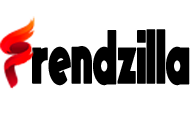Internet supply of German schools is still very different. This is explained by the web hosting provider Hostinger after analysis of data from the Federal Network Agency. According to this, Berliner or Daseldorf schools are already supplied with bandwidth of 1 gigabit per second (GBIT/s), while some schools in leapzing or dortmund are far from being capable of such network connections.
Regional very different
The evaluation of hostingers refers to data from December 2023 and is limited to 20 major cities. About land register All of Germany can be seen for both old and more recent data stands. Among other things, there is already a report on June 2024. Hostinger stated that data was focused at the data request from the end of 2023, as it has already been adjusted by reports and reforms and therefore were more reliable.
According to web hosting provider In December 2023, adequate internet was provided under only two -thirds (67.67 percent) of schools in major German cities.
Leapzing did the worst while comparing the 20 largest German cities. There, only 47.99 percent of schools should be supplied by internet connection with at least 1 Gbit/S. The situation in Dortmund is the same. 49.46 percent of the schools are with a relationship with at least 1 GBIT/S. With 52.21 percent, the Wupportal also jumps more than a mark of 50 percent.
Unusual, but true: According to data from the end of 2023, Berlin tops with a supply rate of 93.88 percent. Düsseldorf follows with 89.73 percent. In the Hanover region, schools have to be satisfied with 82.99 percent – however, it is also a district and not only Hanover city, which makes comparison difficult. The city of Hanover is still behind the region with 79.87 percent. In Munich, the supply is 82.76 percent. Bonn is 78.81 percent, Hamburg 74.77 and Bochaum still 73.39 percent.
In the recent Gigabit Basic Report since June 2024, Berlin is only 81.19 percent. According to Hostinger, various factors can work together here: new or pre -recorded schools are not included in the report or new buildings and temporary container schools may not have a powerful internet connection yet. “It reduces average coverage, although existing schools can also take equal or better care.”
The company also suggests that there is apparently “a bottle neck at 200 to 400 mbit/s”. While an average 83.2 percent schools will reach at least 200 mbit/s, this value is already similar to 400 mbit/s to 67.76 percent-at 67.76 percent-1 GBIT supply (67.67 percent).
1 GBIT/S as a minimum supply
The Ministry of Federal Research and Education was already Care of Broadband schools Created as a requirement.
Later in handouts of countries, Like Ministry of Culture in Lower SaxonyIt says in needs and goal values: “Experiences from schools suggest that a school requires bandwidth, at least 500 MBIT/S with bandwidth. With a data center in schools.
,
(Kbe)
